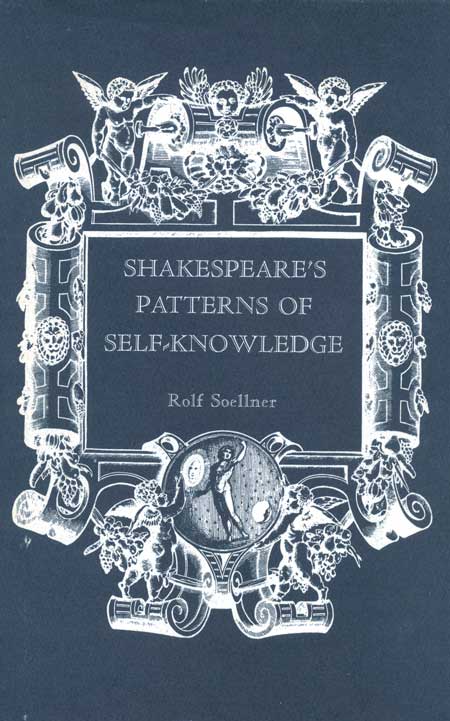Shakespeare’s Patterns of Self-KnowledgeRolf Soellner |
 1972 454 pp. 6x9  | |||
|
“To be admired in its learning, clear shaping, and readable style.” —Modern Philology The Renaissance evinced a strong interest in self-knowledge, and the theme is a persistent one in the moral and dramatic literature of the age. The ancients’ slogan nosce teipsum became a universal watchword of men schooled in the paramount importance of coming to know themselves. Shakespeare’s abiding interest in the concept of self-knowledge shows itself in the dramatic patterns of his plays—in images, ideas, themes, and character portrayals. The recurrence of such motifs as the search for the self and the dangers and rewards of finding oneself as well as the prominence of such ideal of nearly ideal characters as Henry V, Duke Vincentio, and Prospero testify to the powerful influence humanistic notions of self-knowledge exerted on Shakespeare as a writer and thinker. But his was a changing and developing art in a restless and dynamic age. Professor Soellner suggests that as much as Shakespeare’s artistic development, which also affects his patterns of self-knowledge, is part of his natural growth into a mature and incomparable dramatist, it is yet analogous to the stylistic and philosophic changes that led from the Renaissance through Mannerism toward the Baroque. Soellner examines twelve plays in which self-knowledge as the Renaissance understood it figures prominently. Mindful that concepts of self-knowledge are not independent of cultural contexts, and that the definitions in the moral literature of the time were notoriously imprecise and unscientific, he recognizes that the meaning of the term in Shakespeare’s time must be acquired as Shakespeare acquired it; that is, contextually. The author distinguishes three points in Shakespeare’s evolution: an early stage that culminates in the later histories and the romantic comedies, in which the dramatist reflected, sometimes almost schematically, the humanistic patterns of his time; a middle or interim phase that begins with Julius Caesar and includes both Hamlet and the “problem comedies,” and in which Shakespeare experiences certain hesitations and entertains some doubts about the patterns accepted uncritically earlier; and the final period of the great tragedies and tragicomic romances, in which a growing awareness of the unpredictability of human nature leads to a dynamic synthesis in which what is the quintessence of humanism is fused with a full realization of the weakness of codification and a profound sympathy for the human condition. In the last of his great plays, The Tempest, Soellner finds, Shakespeare composed a brilliant finale in which are worked many of the patterns that he used in his earlier work. The dream of The Tempest, that man can control himself, limit his power, and even resign it voluntarily, is totally humanistic—and may be utopian. But it is one of the happiest expectations of man and represents an irresistible affirmation of his potential greatness. Rolf Soellner, author of Timon of Athens: Shakespeare’s Pessimistic Tragedy, is professor of English at The Ohio State University. | ||||

